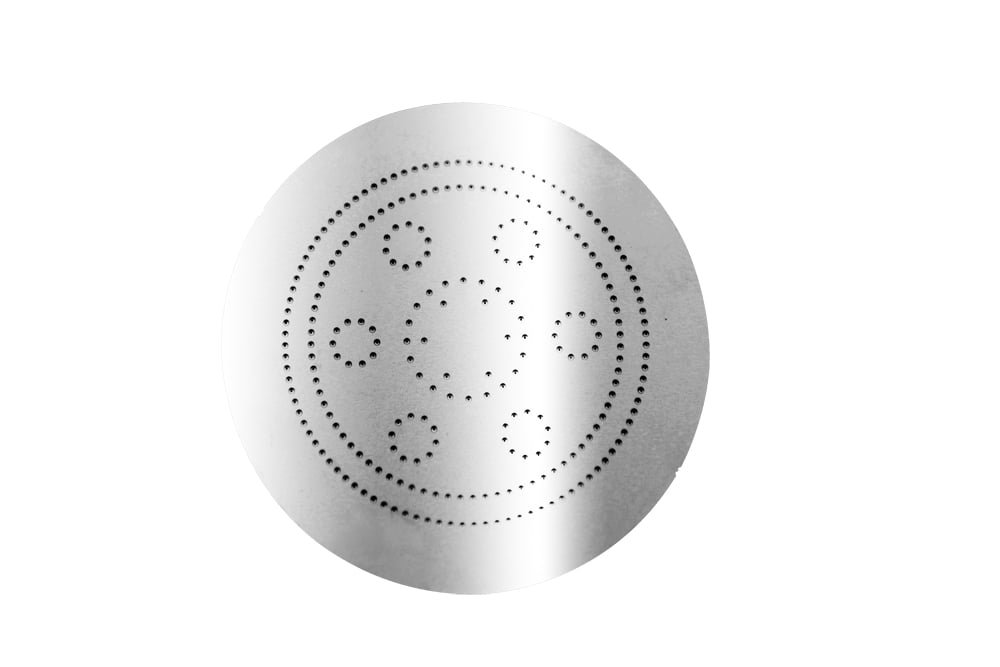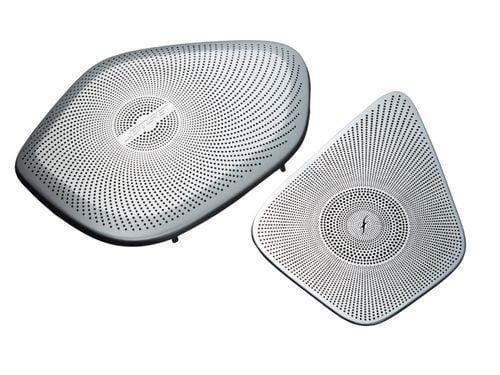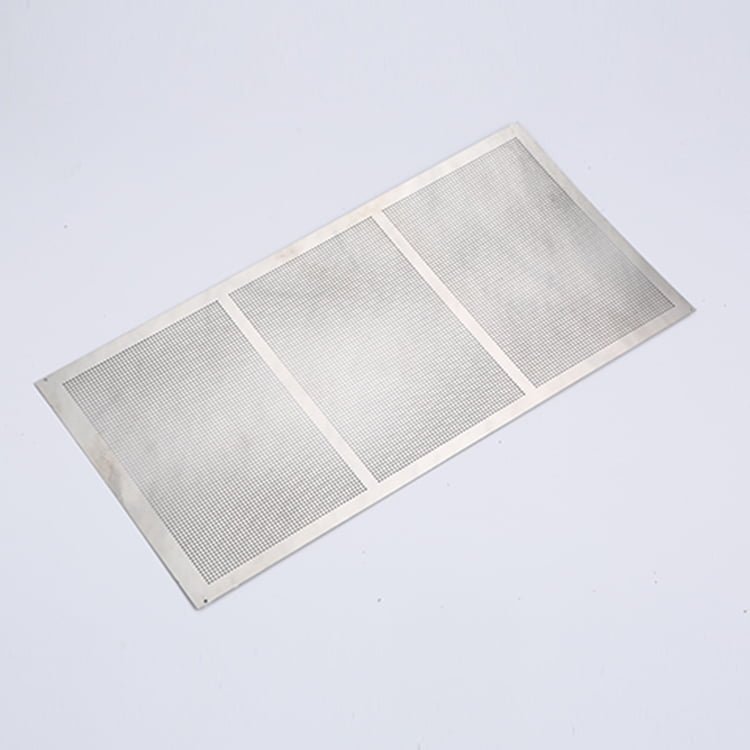


- Raw Material Selection Begin with high-quality stainless steel. Grades like 304 and 316 are ideal due to their excellent corrosion resistance and durability.
- Cleaning Line Proper cleaning is essential to eliminate contaminants that might affect the engraving process.Steps:
- Water Rinse: Rinse the stainless steel sheets with deionized (DI) water to prevent impurities.
- Cleaning Solution: Soak the stainless steel in an alkaline cleaning solution to remove oils, grease, and other contaminants.
- Rinse: Use DI water again to remove any residues from the cleaning solution.
- Drying: Employ hot air dryers to thoroughly dry the stainless steel.
- Screen Preparation and Coating After cleaning, prepare the screen with the desired pattern and apply a photosensitive emulsion.Steps:
- Screen Coating: Apply a uniform layer of photosensitive emulsion onto the screen mesh.
- Drying: Allow the emulsion to dry in a dark, dust-free environment to prevent premature exposure.
- Drying: 20-25°C with low humidity, typically for 30-60 minutes, depending on the emulsion type.
- Exposure Line The emulsion-coated screen is exposed to UV light to create the desired pattern.Steps:
- Image Placement: Place a film positive of the design over the emulsion-coated screen.
- Exposure: Expose the screen to UV light, which hardens the emulsion where the light hits.
- Development: Rinse the screen with water to remove the unexposed emulsion, revealing the stencil.
- Cost-Effective: Suitable for less complex patterns.
- Versatile: Can be used for various sizes and shapes of patterns.
- Screen Printing Line The prepared screen is now used to apply a resist ink onto the stainless steel.Steps:
- Ink Application: Place the screen over the stainless steel and use a squeegee to apply the resist ink through the screen onto the metal surface.
- Drying: Allow the resist ink to dry and adhere to the stainless steel.
- Drying: 50-60°C for 10-20 minutes to ensure the resist ink is fully cured.
- Stainless Steel Engraving Line The resist-coated stainless steel is now ready for the engraving process, which removes the unprotected areas of the metal.Engraving Solution Example:Steps:
- Etchant Preparation: Prepare an etchant solution, such as ferric chloride (FeCl₃):
- Ferric chloride (FeCl₃): 400-500 g/L
- Temperature: 45-55°C
- Engraving Process: Immerse the stainless steel in the etchant solution. The unprotected areas will be etched away, creating the desired pattern.
- Agitation: Apply mild agitation to ensure even etching.
- Duration: Engraving time depends on the desired depth and pattern complexity, typically 10-30 minutes.
- Rinse: Thoroughly rinse with DI water to remove etchant residues.
- Temperature: Maintain at 50-55°C for optimal engraving speed and precision.
- Proportion: Regularly monitor and replenish the etchant solution to maintain effectiveness.
- Etchant Preparation: Prepare an etchant solution, such as ferric chloride (FeCl₃):
- Stripping Line After engraving, the remaining resist ink must be removed to reveal the final metal pattern.Steps:
- Stripping Solution: Use a resist ink stripper solution, often an alkaline or solvent-based solution.
- Immersion: Immerse the engraved stainless steel in the stripping solution until all resist ink is removed.
- Rinse: Rinse with DI water to eliminate any stripper residues.
- Final Drying: Dry the stainless steel using hot air dryers.
- Stripper Solution Temperature: Typically 40-60°C.
- Immersion Time: 5-10 minutes, depending on the resist thickness and type.
By following these detailed steps, you can achieve precise and high-quality screen-printed engravings on stainless steel, suitable for various applications in industries such as signage, electronics, and decorative arts.
If you need a OEM factory to realize your project, please do not hesitate to contact us.
Wet Chemical Etching Company is a leading provider of wet chemical etching services, dedicated to delivering high-quality and precise etching solutions for the semiconductor, microelectronics, and precision manufacturing industries. Equipped with advanced technology and state-of-the-art equipment, our company can handle various materials and complex pattern requirements. Our professional team has extensive experience and expertise, ensuring that every project is delivered on time and meets the highest quality standards. Whether for prototype development or large-scale production, Wet Chemical Etching Company is committed to customer satisfaction, offering customized and efficient services to help your products succeed in the market.
